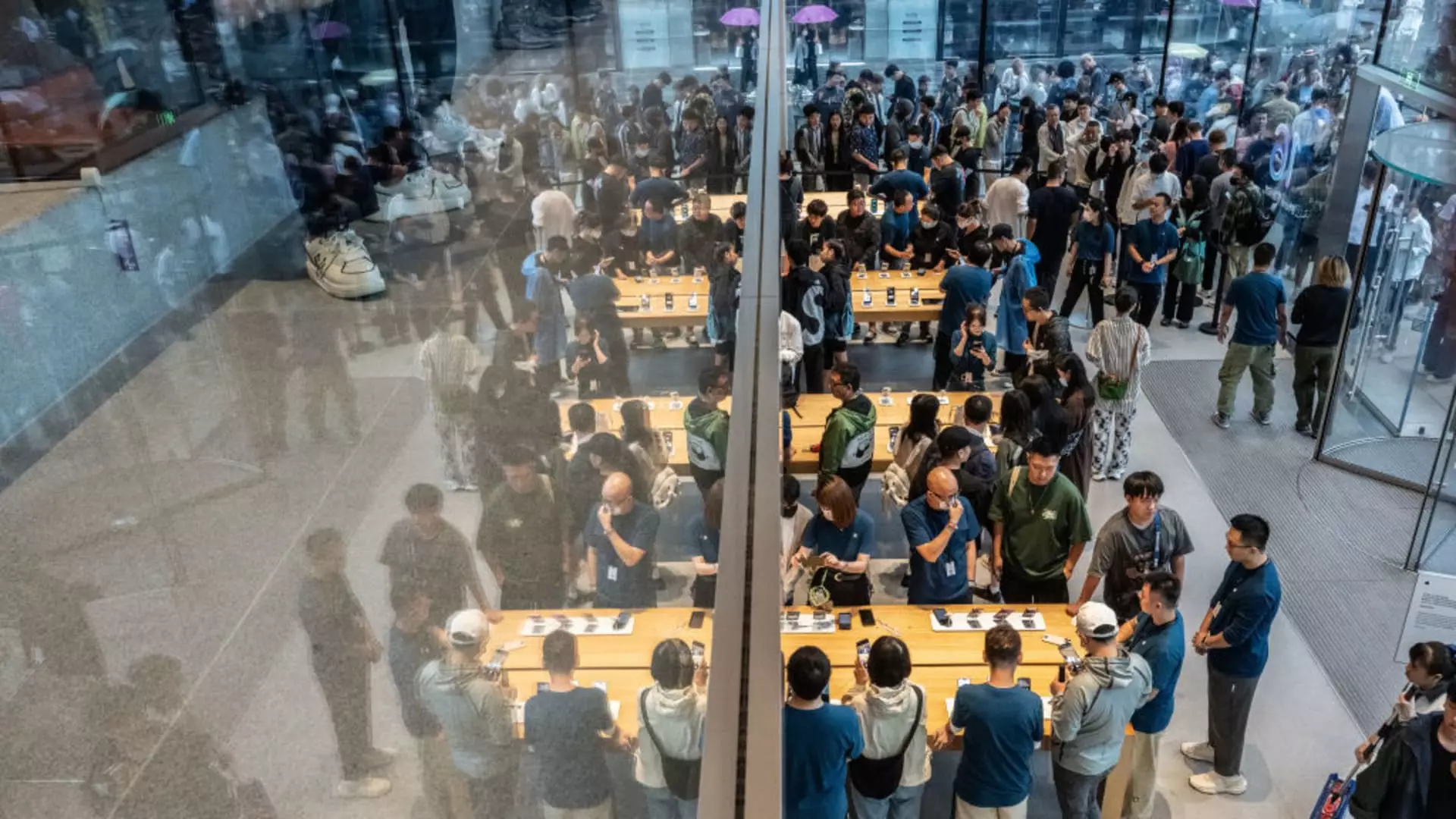The launch of new smartphones often creates a buzz in the tech world, particularly in competitive markets such as China. Recent observations revealed an intriguing scenario during the release of the iPhone 16 and Huawei’s Mate XT. Spot checks conducted by CNBC revealed that many consumers were considering both brands despite their differing price points and specifications. This article delves into the implications of this consumer behavior, the current market dynamics, and the challenges each company faces in their quest for dominance in the Chinese smartphone sector.
During the launch day, CNBC engaged ten shoppers at both Apple and Huawei stores, noting that eight expressed interest in both products. This indicates a potential shift in consumer loyalty, suggesting that even affluent Apple users are open to exploring alternatives like Huawei, a key player that has been recovering from significant sanctions imposed by the U.S. Since the restrictions came into play in 2019, Huawei has worked tirelessly to stabilize its standing within the market, ranking fourth in market share according to Canalys data from the second quarter of this year.
The pricing landscape further complicates the dynamics at hand. The iPhone 16 Pro Max starts at $1,199, whereas Huawei’s Mate XT—a trifold phone—starts at an exorbitant price of over $2,800. The disparity in pricing is stark; while the iPhone attracts a relatively larger consumer base, the Mate XT has carved out a niche for those willing to invest heavily in cutting-edge technology, whether for personal use or resale.
The resale market also showcases a fascinating contrast between the two brands. Reports indicate that second-hand Mate XTs are listed for as high as 60,000 yuan ($8,520), a representation of the perceived value and demand for this unique device. Comparatively, the resale prices for iPhone 16 Pro Max range from 10,500 yuan to 16,300 yuan, signaling a more accessible entry point for consumers looking to upgrade.
This price analysis reveals a broader pattern in consumer behavior—where individuals willing to splurge on premium devices like the Mate XT view them as not just products but investments. The resale potential adds an additional layer of consideration for tech enthusiasts who may prioritize owning the latest technology over personal usage. This trend suggests that some consumers might acquire a device solely with the intent to sell it later at a markup, reflective of the speculative nature of the smartphone market in China.
In stark contrast to the enthusiastic Apple fanbase—who began lining up as early as 5:30 a.m. for the iPhone launch—Huawei experienced a more subdued response. Though attendees trickled into Huawei stores, the lack of long lines reflected a potential struggle in brand perception following the sanctions. Huawei had commenced deliveries of its new devices meticulously staged at a specific time, but the overall excitement seemed eclipsed by Apple’s more vigorous launch environment.
Consumer insights from individuals like Yang and Wang further illustrate an interesting duality: both actively using iPhones expressed interest in the Mate XT. Yang indicated curiosity drawn from Huawei’s innovative features that he felt were lacking in the Apple lineup. This sentiment highlights an evolving landscape wherein consumer loyalty is contingent not merely on brand identity but also on a device’s inherent technological value.
As the smartphone market continues to evolve within China, it becomes evident that competition is intensifying between iconic brands like Apple and Huawei, each with its respective strategies and target demographics. With consumers increasingly willing to explore high-end options across platforms, companies must continually innovate and reevaluate their value propositions.
Ultimately, the game is not merely about hardware specifications but understanding consumer desires and considering how brand loyalty can be tested in a market that values both innovation and investment potential. As we move further into the technological landscape, the question remains: will Apple and Huawei find ways to outmaneuver each other, or will consumer preferences redefine what it means to be a leading smartphone brand in China? The answers may significantly impact how future launches are received in this unique marketplace.


Leave a Reply